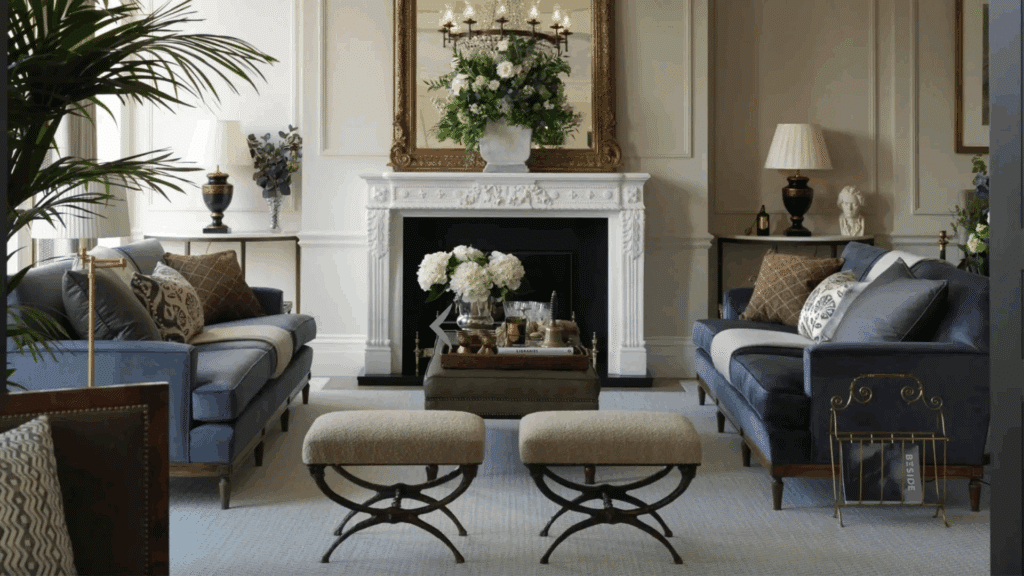When it comes to creating interiors that feel both modern and timeless, nothing compares to the power of classic materials. These are the elements that have stood the test of time and are materials that speak of craftsmanship, elegance, and authenticity, yet blend seamlessly with contemporary styling.
Whether you’re designing a city apartment, a country retreat, or a minimalist townhouse, these classic choices bring depth, warmth, and character to every space.
Below are seven classic materials that continue to inspire today’s interior designers, along with ideas on how to use them in fresh and exciting ways.
1. Natural Stone
Stone is a design staple precisely because of its strength, beauty, and versatility. From cool marble to warm limestone, natural stone provides texture and visual interest while remaining practical and durable.
Contemporary interiors often use stone for flooring, feature walls, and kitchen worktops, allowing subtle veining or dramatic patterns to become part of the design story.
High-quality options from trusted suppliers such as mystonefloor.com make it easy to introduce stone that feels luxurious and long-lasting, whether you prefer a sleek polished finish or a rustic tumbled edge.
2. Solid Wood
Wood brings natural warmth and organic texture to modern spaces. Oak, walnut, and ash can be crafted into everything from herringbone floors to bespoke furniture.
Even in minimalist settings, wood prevents interiors from feeling cold or sterile. Try combining pale woods with matte black accents for a Scandinavian-inspired look, or choose darker timbers to add depth and sophistication.
3. Glass
Once considered purely functional, glass has evolved into a material of elegance and innovation. Large glass panels, sliding doors, and statement staircases allow light to flow freely, creating a sense of openness and continuity between rooms.
Frosted or textured glass can provide privacy while still capturing the play of light that makes contemporary interiors feel airy and inviting.
4. Metal Accents
Brass, bronze, stainless steel, and blackened iron offer a crisp contrast to natural surfaces. Whether used for door handles, lighting fixtures, or kitchen splashbacks, metals lend a touch of refinement and industrial chic.
Pair brushed brass with soft neutrals for understated glamour, or use matte black steel to sharpen a minimalist scheme.
5. Leather
Supple leather has a tactile richness that softens clean modern lines. Think leather dining chairs, sleek armchairs, or stitched wall panels for a boutique-hotel feel.
Over time, leather develops a beautiful patina that tells the story of your home’s daily life – proof that classic materials truly improve with age.
6. Ceramic and Porcelain
Tiles are no longer confined to bathrooms and kitchens. Large-format porcelain tiles and handmade ceramics can create striking floors, splashbacks, or even statement walls.
Choose neutral shades for a gallery-like atmosphere, or embrace bold colours and intricate patterns to inject personality into a contemporary space.
7. Textured Fabrics
Classic fabrics such as linen, wool, and velvet add comfort and dimension to modern interiors. Layer linen curtains with velvet cushions or wool throws to balance sleek architectural features.
Mixing textures not only enhances visual interest but also makes minimalist rooms feel inviting and lived-in.
Bringing It All Together
The beauty of classic materials lies in their adaptability. They honour tradition while allowing creativity to flourish, giving you a foundation for interiors that will remain stylish for decades.
Whether you opt for the enduring elegance of natural stone, the warmth of wood, or the subtle sheen of metal, these materials provide a bridge between heritage and modernity.
By combining these timeless elements thoughtfully and sourcing high-quality products from trusted experts, you can create a home that celebrates the past while embracing the future.

